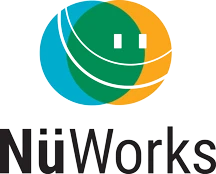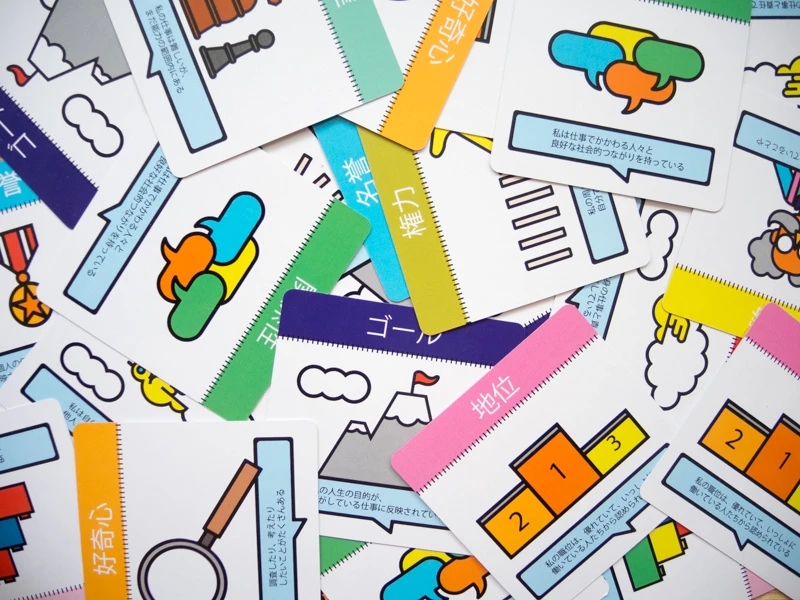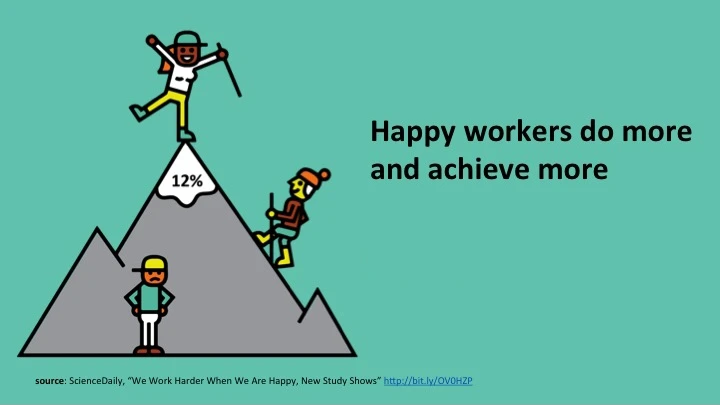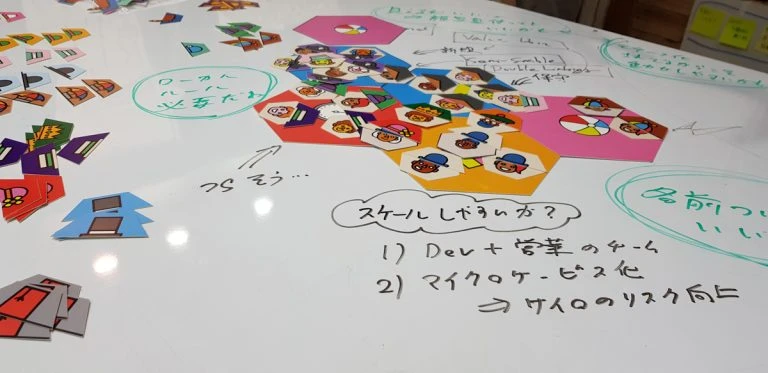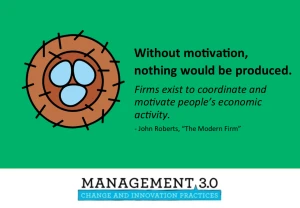 Two questions are often asked in organizations worldwide: What motivates my team? And how can we motivate the people in our organization?
Two questions are often asked in organizations worldwide: What motivates my team? And how can we motivate the people in our organization?
These are important questions indeed, because without motivation nothing would be produced. “Firms exist to coordinate and motivate people’s economic activity” as John Roberts writes in his book The Modern Firm.
The Moving Motivators is a tool from Management 3.0 which helps you finding answers to these questions. I always use it with my clients and it helps us to gain great insights and of course we have a lot of fun. Until now the game was only available in English but I am happy to present to you the Japanese version.
What people motivates – intrinsic motivation
Before we know how to motivate people, we should ask what motivates or demotivates us because it is different from each person. For example for me as an entrepreneur freedom and curiosity is crucial, I feel very energized and motivated when I can decide my path freely and when I have tasks where I can gain new knowledge. On the other hand my wife likes order, she feels good and motivated when there is certainty and organization in place. When we go travelling this always results in a conflict, as I want to decide the travel spontaneously whereas she wants to plan everything ahead.
If you want to learn more about the power of intrinsic motivation, take a look at Daniel Pinks`s book Drive: The Surprising Truth about What Motivates Us or watch his TED talk:
But it is not always easy to talk about each other’s intrinsic motivations, because they are somehow hidden and not always clear, even for the people themselves. Therefore Management 3.0 offers a way to discuss and learn about the intrinsic motivators of everyone in the team/organization. We call it Moving Motivators.
Moving Motivators
 Moving Motivators are a set of 10 intrinsic motivators, developed by Jurgen Appelo, the founder of Management 3.0:
Moving Motivators are a set of 10 intrinsic motivators, developed by Jurgen Appelo, the founder of Management 3.0:
- Freedom
- Curiosity
- Order
- Goal
- Honour
- Acceptance
- Mastery
- Power
- Relatedness
- Status
These intrinsic motivators are based on several other models, like the 16 Basic Desires Theory by Steven Reiss.
How to play the Moving Motiators Game
There are no fixed rules on how and when to play Moving Motivators, but I can describe to you my rule set for beginners:
- Define a topic, for example: What motivates you in your current work or an upcoming project
- Form pairs or teams
- Everyone gets a set of 10 Moving Motivator cards and takes some time to study the cards
- And then each person defines for himself what 3 motivators are the most important ones, only 2 or 4 are also fine
- When everyone is finished, each person presents his or her choice and explains why this choice has been taken. The discussion here is the important part! Also different opinions about the meaning of each card a very valuable, as the understanding of it differs by person.
- (optional) Once you are finished you can compare with the other teams/pairs and extend the discussion there.
Benefits for playing Moving Motivators
What can you learn from it and how does it benefit your team or organization?
First of all, it gives the people the opportunity to talk about their motivations. So, it is a great communication tool, ice breaker and team building exercises.
Also, it helps to understand the “why” of each other better.
And last but not least, it can help you to boost your motivations level in the team. If known what is needed for a motivational environment, you as a manager or even as a team member can take this into account. For example if you have to choose tasks or projects, you can consider the intrinsic motivations. The chance that the people are feeling more energized and engaged is very high. A person who needs Relatedness will be very motivated if she works with people around her instead purely alone on her tasks.
Free Japanese version of Moving Motivators (and English of course)
 Interested in playing by yourself? You can download the game for free and play it with your team.
Interested in playing by yourself? You can download the game for free and play it with your team.

